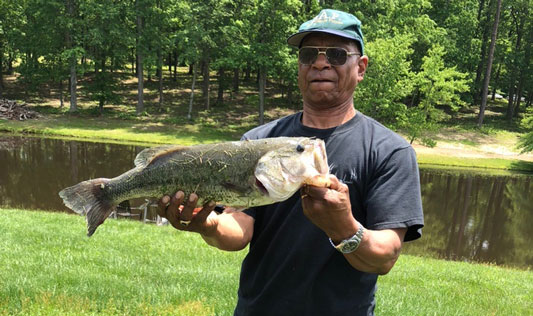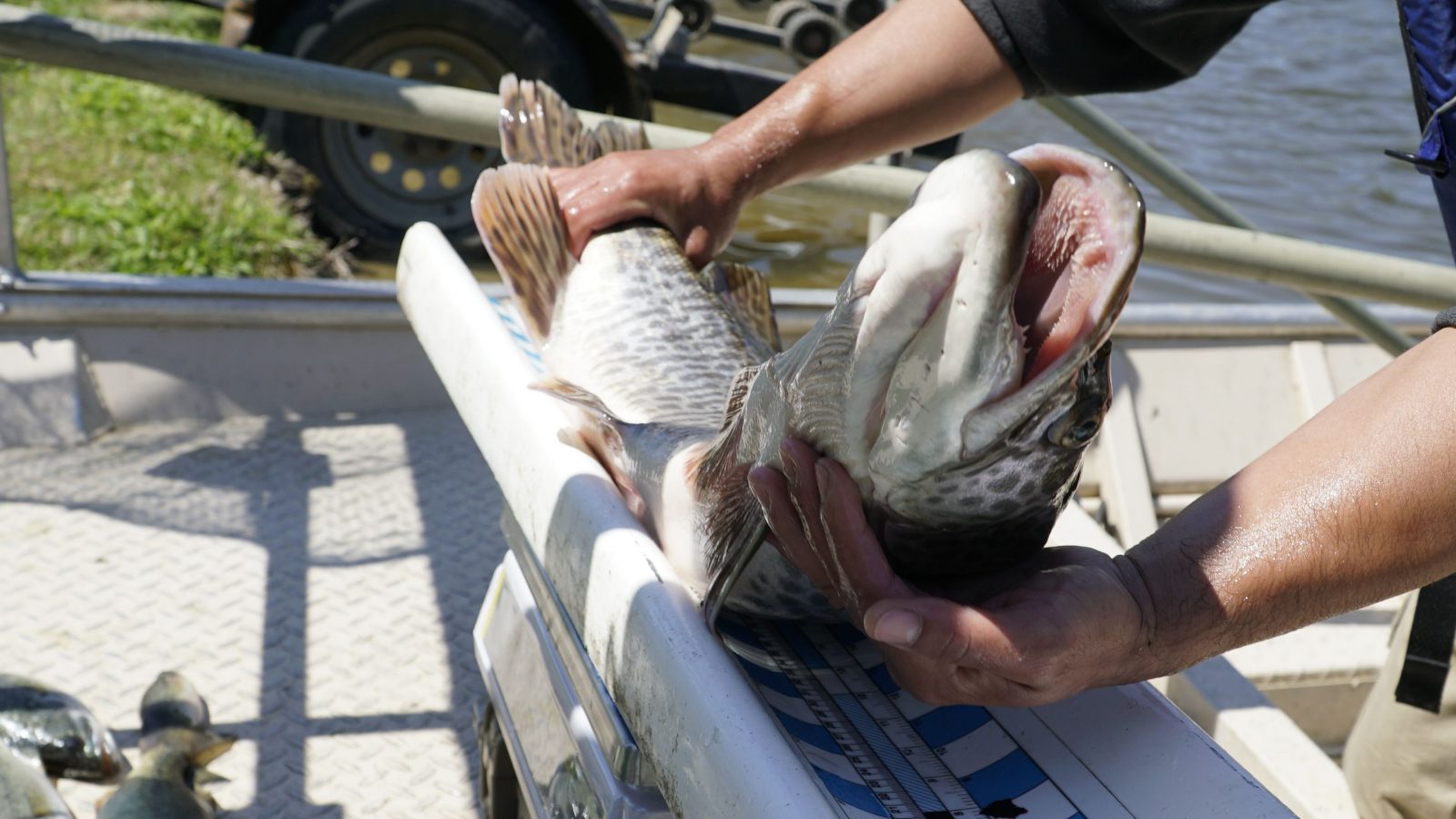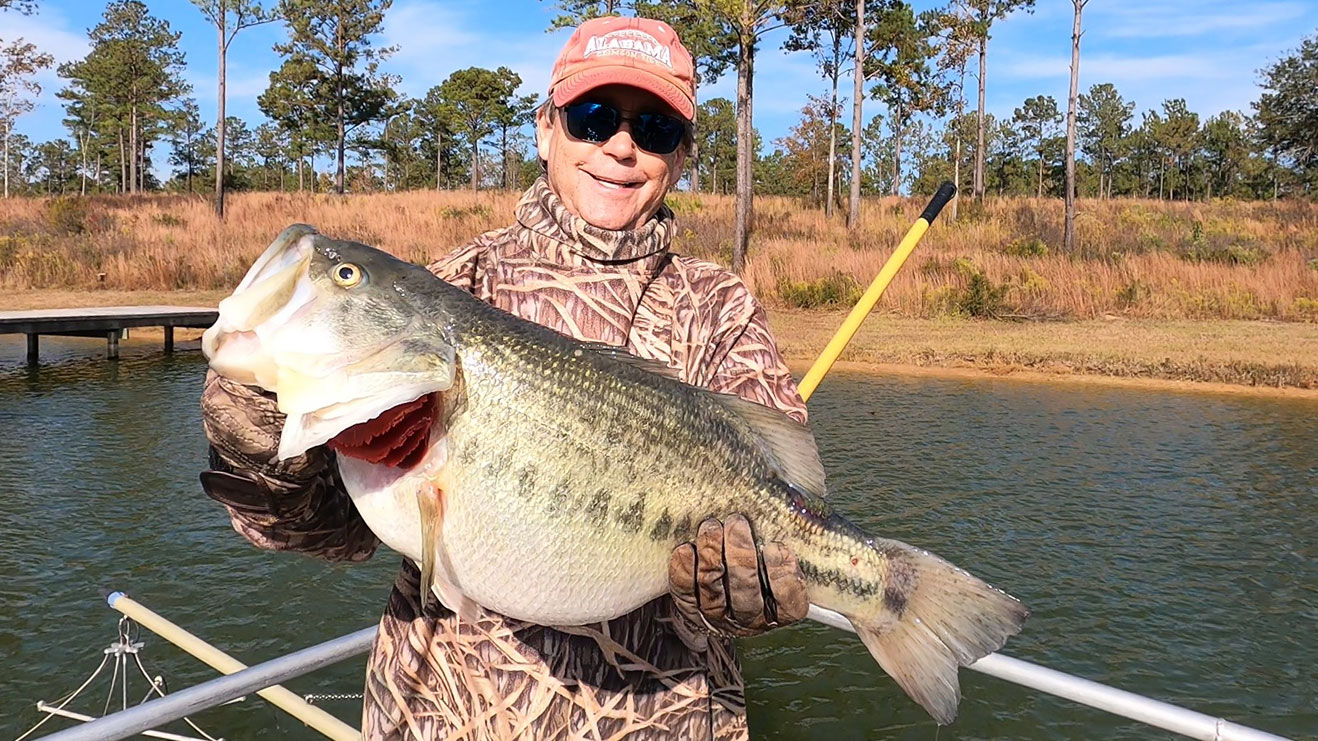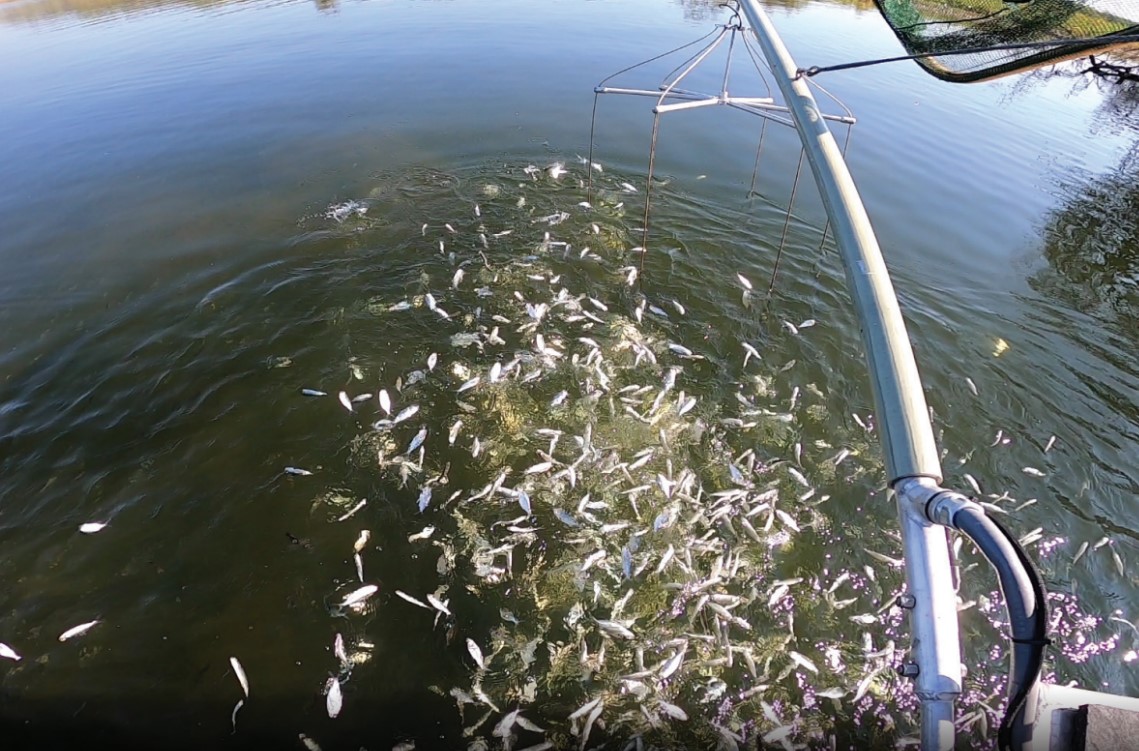

Developing a thriving trophy fishery is no easy task
To be successful, you must consider the various factors that could restrict productivity and develop a plan to create the ideal environment for fish growth. Growing massive and healthy largemouth bass or tiger muskies can be achieved by considering these three facets for successful fisheries management:

Recruitment
Recruitment is the number of fish that survive and grow to a catchable size. This can vary annually due to seasonal differences in survival at egg, larval and juvenile life stages. High survival (strong recruitment) from year to year often has a negative impact on the fishery by creating a predator-dominated resource, thus reducing available prey. Conversely, limited fish survival can over time create a non-sustainable fishery.
It is possible to manage recruitment, but the results can depend on a variety of factors, including the size and age of your lake or pond, habitat availability, water quality, and the fish community. One strategy for managing recruitment involves stocking only female fish, which negates reproduction and maintains adequate population size. Exclusively stocking females is most effective in new or renovated systems—and the frequency of stocking depends on fish growth and desired angler catch rates. If the fishery is established, Biologists can manage recruitment through electrofishing, habitat manipulations, and the creation of an abundant forage base.

Growth
Fast growth is critical to develop and maintain a trophy fishery. The growth potential of your trophy fish is highly dependent on genetics, forage abundance and quality, diverse and adequate habitat, and high productivity.
Stocking proper genetics when the fishery is first established can help ensure rapid growth. For already established fisheries, Biologists manipulate genetics by reducing the adult population and stocking. The growth of forage populations is managed by stocking, feeding, and fertilization. Forage also needs to consist of a variety of strategically-stocked species, providing abundant and diverse prey.
Habitat impacts the growth of your trophy fish by congregating forage populations into one area while also providing shelter for prey. Habitat consists of both large and dense cover, which can be introduced to a fishery as natural or artificial structures. Managing and increasing productivity is achieved through fertilization. How much and how often Biologists fertilize depends on the location and available nutrients.

Mortality
For a management plan to be effective, Biologists need to understand and manage mortality. With low mortality (high number of fish surviving each year), the fishery becomes overpopulated. Conversely, with high mortality, desired angler catch rates will not be achieved. For an effective management plan, SOLitude utilizes electrofishing and increases angler harvest to help control mortality levels.
In order to establish a successful trophy fishery, recruitment, growth and mortality must be measured and equally understood. In order to maximize your fishery, consider working with a professional Fisheries Biologist who has experience implementing these techniques and understands how to tailor them to achieve your trophy fishing goals.









